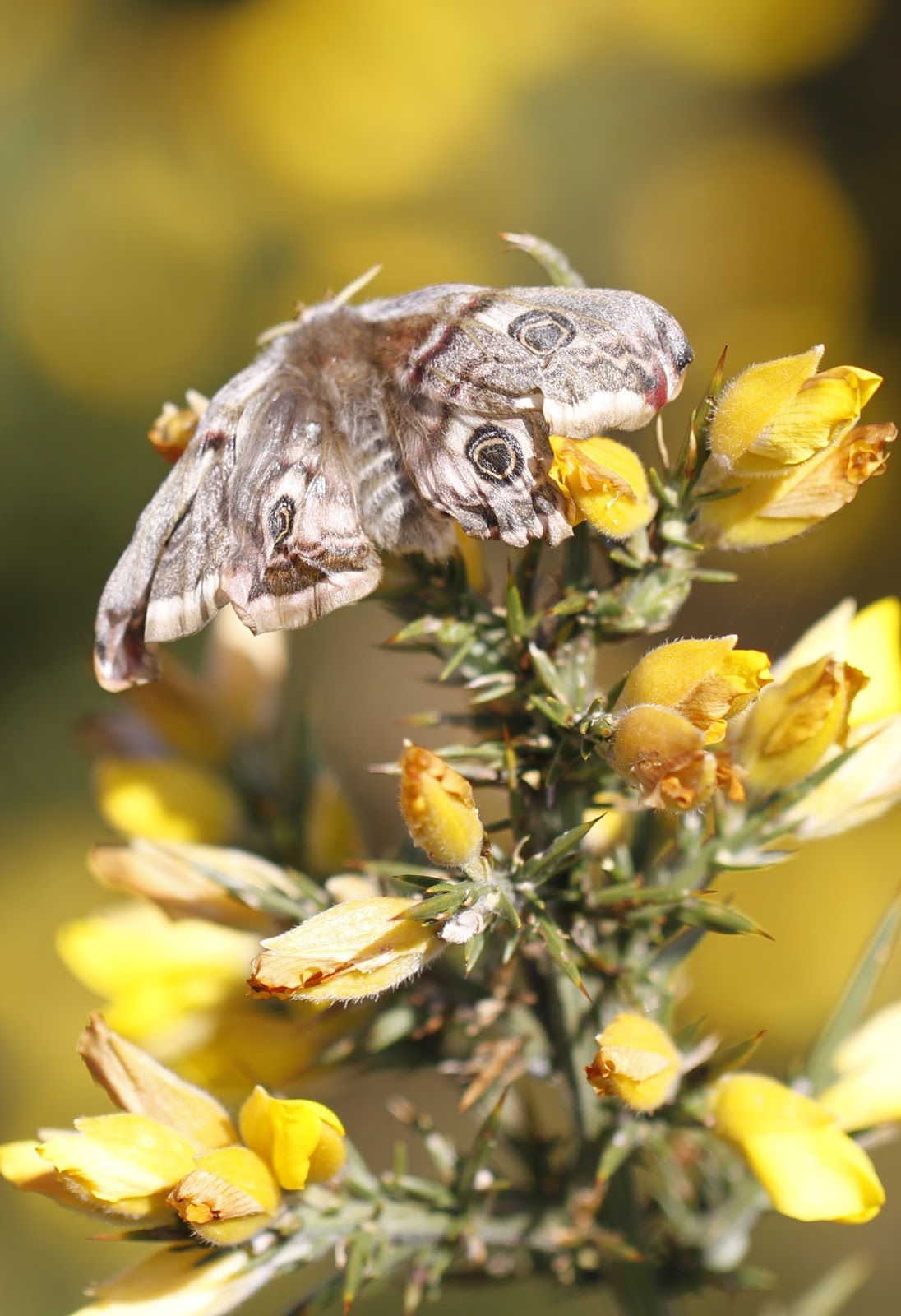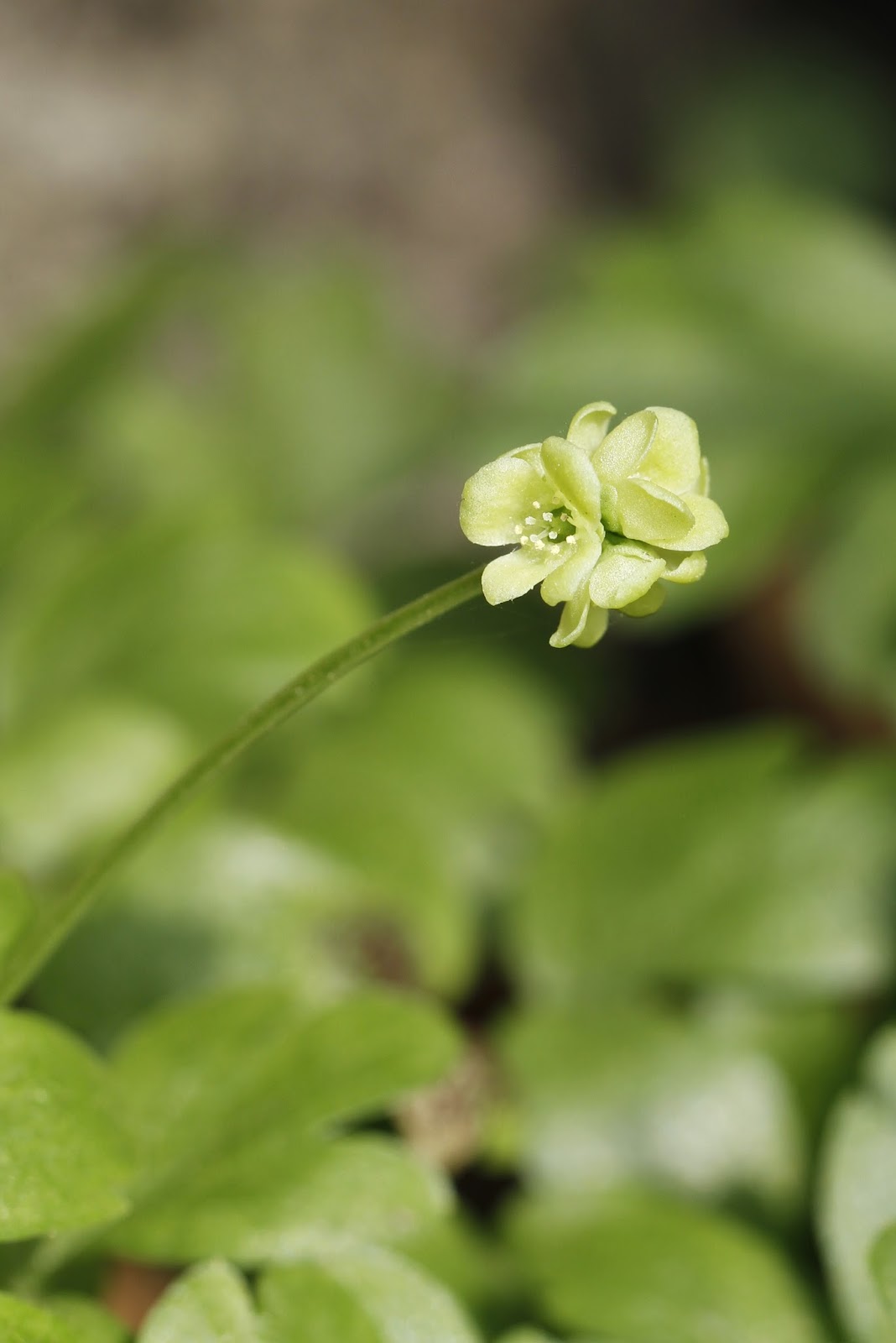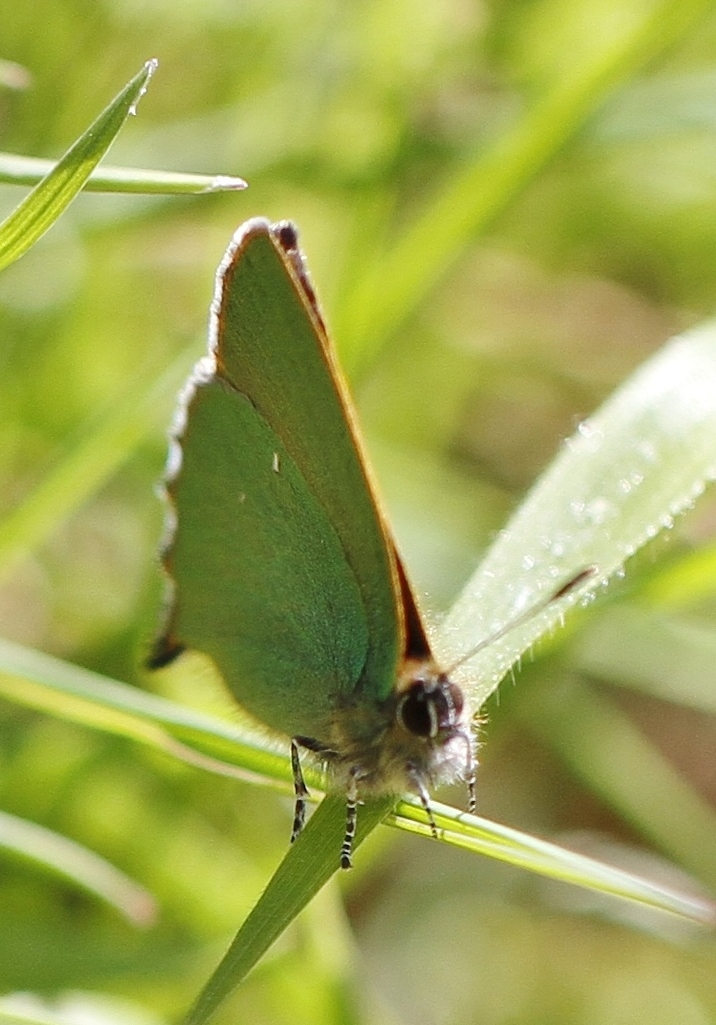The reader might remember these 'little jewels' , Emperor Moth caterpillars , which I was entrusted with early last June . Having gorged on Bramble leaves , they 'spun up' cocoons , and that was how
they spent the time from then till earlier this week . I have been checking on a daily basis during the warm spell of weather , and on returning home the other day , heard noises from their box . On
opening it , I found these two stunning males , but all the news was not good . With them was a
female , but she had deformed wings , having not fully expanded . I contacted Martin who had entrusted me with the caterpillars , and he advised me to take the female and 'hang her out' , which is what she would have done if she had been perfect , when the sun was out . The following morning ,
in sunny but windy conditions , I took her to the Common and place her in a sheltered position on some Gorse , the hope being that she would 'call in' a male by releasing pheromones which can be detected by males over very large distances , according to Martin . In that hope , I set the camera up on a tripod and waited , but apart from me getting 'goggle eyed' watching , nothing else happened . I left her enjoying the sunshine as there was nothing else I could do for her . Yesterday afternoon on my way back home , I looked in to see if anything had changed , and found her still where I left her ,
but now with 25/30 eggs stuck to the Gorse , her deformed life had not been in vain . Having read that the eggs are laid in batches , I moved her to some Bramble , in the hope that she might lay another batch there . I have since spoken again to Martin , who advises that the eggs on the Gorse be removed and allowed to hatch , then returned to the wild on Bramble , where the caterpillars can grow , so that is my next task .
In between dealing with the above , I have spent several hours over the last week , trying to catch up with one of many Ring Ouzels that have been passing through on migration . One had been reported on three consecutive days at Lloyd Park on the outskirts of Croydon , and I spent a warm afternoon criss-crossing this large and sprawling park without any luck . That evening I read that it had been recorded again that day , but at a sports field on the edge of the park . The following morning I headed off to the sports field and waited . Plenty of Woodpigeons and Stock Doves feeding on the ground , then after a long wait , a pair of Mistle Thrush dropped in . My attention was then taken by a dog walker entering the field from the far side and seemingly releasing the dog from it's lead , to chase the assembled birds . As it raced towards the middle , a last scan into one corner spotted the
male Ring Ouzel , who must have just dropped in , and I just managed three distant shots before the swirl of birds taking off , took him with them , not to be seen again , and not recorded again since . After lunch , I spent a pleasant couple of hours at Hutchinsons Bank , where Martin does the transect . He emailed me to say he had recorded 3 Grizzled Skipper the day before , so I hoped to see them , but failed to do so . A couple of Orange Tip males , Green-veined White , Peacock , Holly
Blue and several Brimstone , including another courting pair , were the species found . I decided , before returning home , to re-visit the Ring Ouzel site as most records were around 3 o'clock in the afternoon . I didn't have another sighting , but did meet the recorder , a birder/dogwalker , who passes the field every day with his dog at that time , Whilst waiting for a sighting , a noise in a conifer
alerted me to an albino Grey Squirrel , who only allowed two shots , before disappearing towards the top of the dense tree .
Feeling 'robbed' the previous day , yesterday morning I returned to another site near Warlingham , where I had also been looking for Ring Ouzels , and Brown Hares during the Winter . I stopped and looked with binoculars up the hill , and almost immediately spotted a male on the track . By the time I grabbed the camera , he was gone , but eventually it got even better , when a second male showed .
The two were being constantly harassed by the local Blackbirds , and although too far for the lens , managed a few record shots of the pair , in this one with one of the Blackbirds . They were on the far side of a horse paddock that had a diagonal footpath across it to a stile on the fenceline behind the birds in the shot . I did attempt to get closer via the footpath , but with no cover across the paddock , the wiley birds spotted me and flew further up the slope . The attempt wasn't wasted though , as apart
from several Skylark singing and displaying , a minimum of 4 Wheatear were also found , a male and
female posing for the camera , but they too wouldn't let me get close .
After lunch , I set off to look for the first Orchids if the year , parking up at Cudham Recreation Ground , and enjoying a very pleasant walk across the farmland towards Strawberry Bank , with more Skylarks , half a dozen Swallows and a couple of House Martins . With Bluebells in full
bloom , it's always nice to find the odd white one . Along the track , in exactly the same place that I first found it many years ago , Moschatel - Town Hall Clock / Adoxa moschatellina is in full flower ,
with it's four flowers ( clock faces ) on each side , and one on top for good luck . Reaching the orchid site , which I haven't visited for a few years now , I could only find 11 flower spikes , when they used
to be counts of 100/200 on previous visits . Hopefully it is just a blip this year , as nothing seems to have changed on the site . A bit further along the track is Strawberry Bank , a small chalk grassland site managed by LB.Bromley . I found a couple of Early Purple Orchids here in the past , but none this time . On the way back to the car , a few Labiates , plants with square stems were found ;
Yellow Archangel / Lamiastrum galeobdolon ,
Bugle / Ajuga reptans ,
and Ground Ivy / Glechoma hederacea .
Only other interest found was up on the Common on the way home . Looking like a wasp , but in fact a Cuckoo Bee , Nomada signata , I believe .
4 hours ago


















.JPG)







































